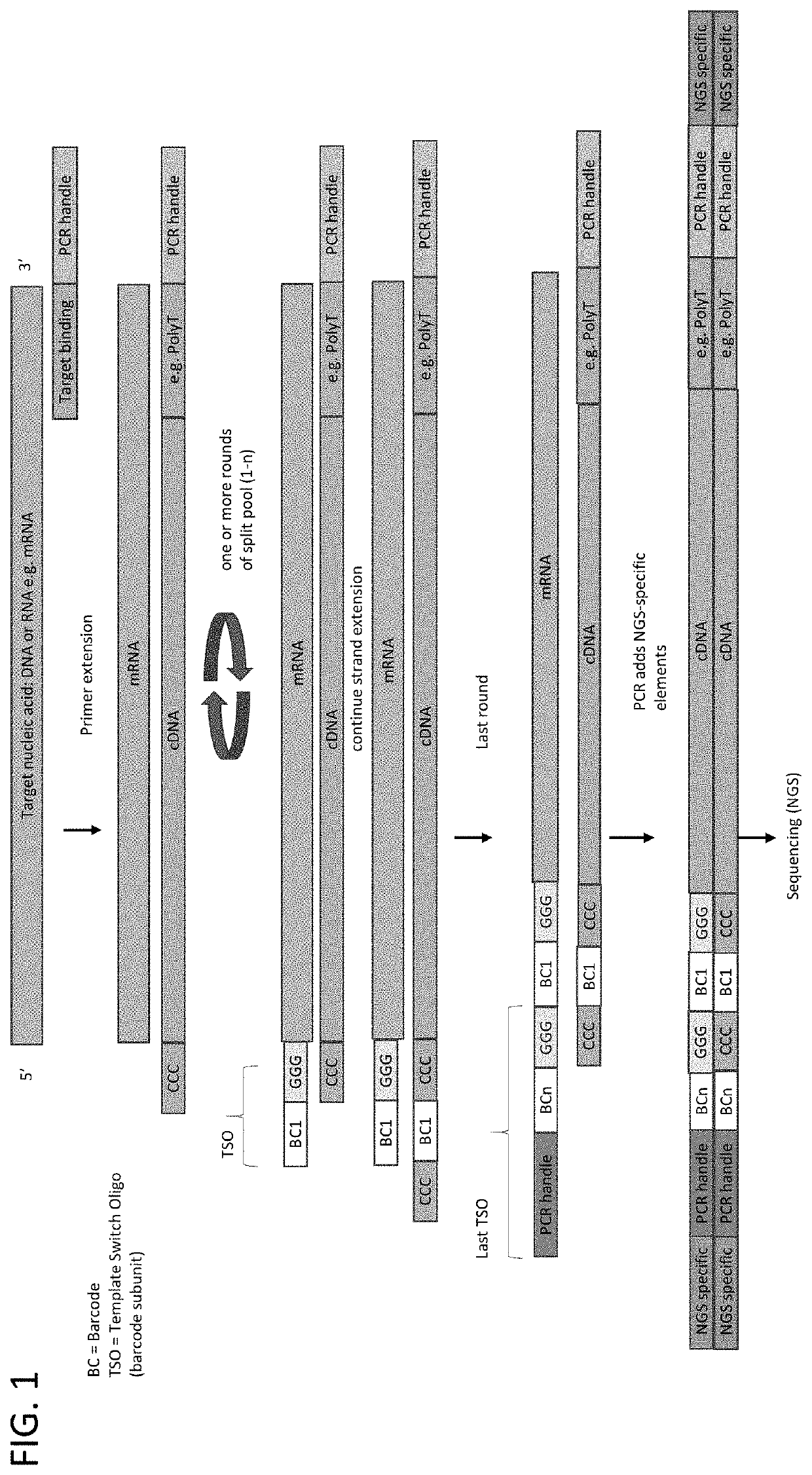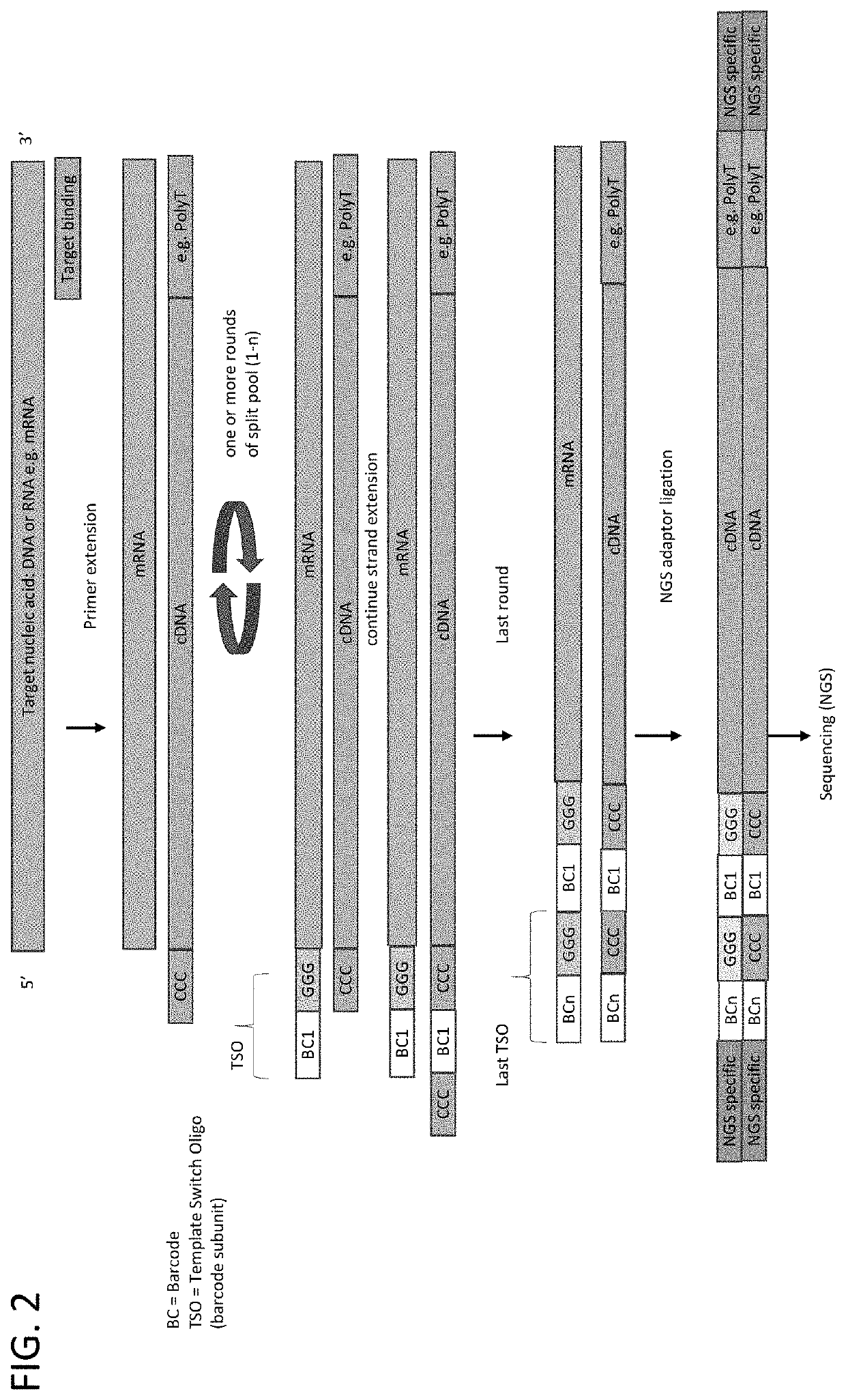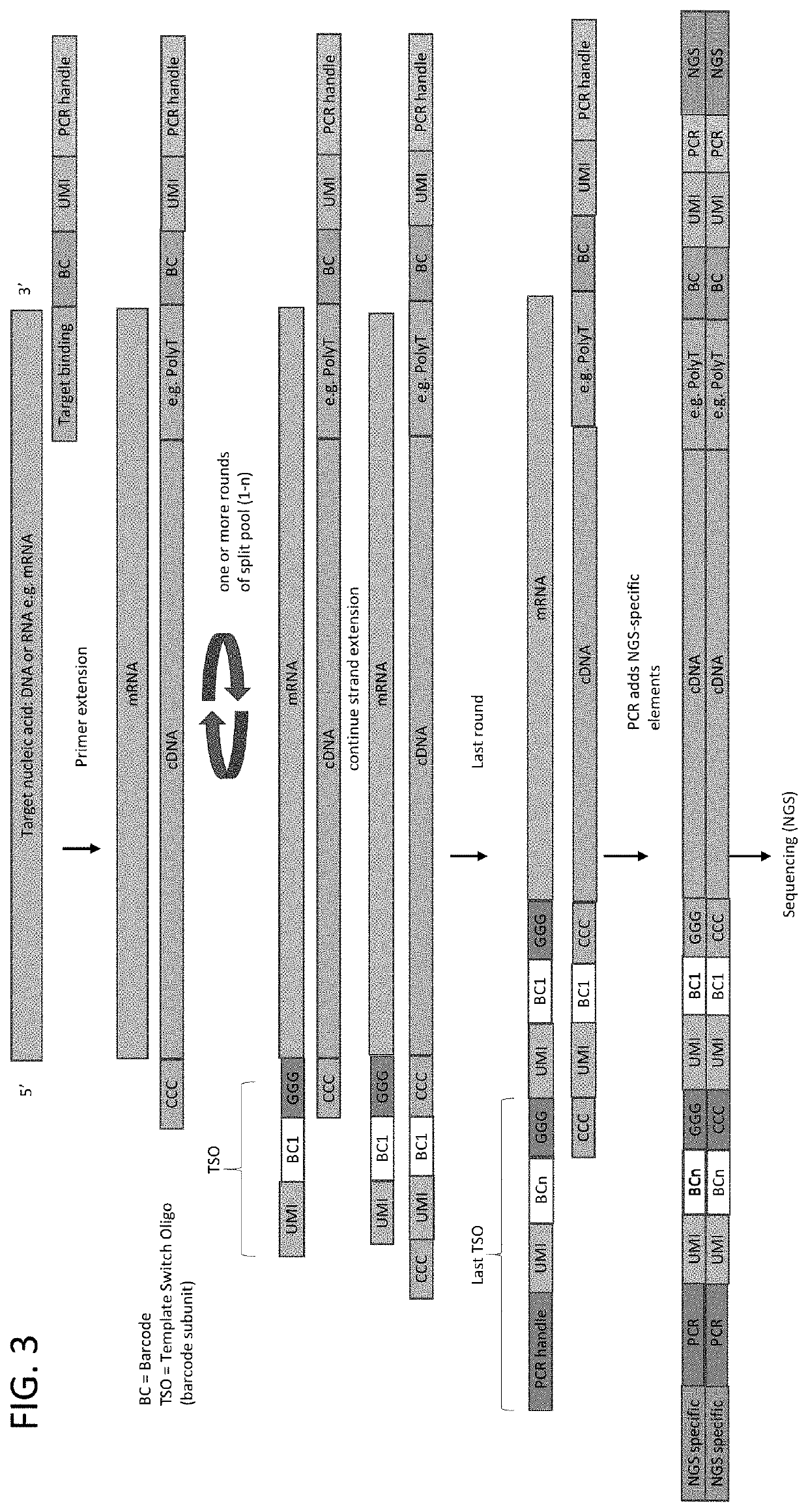Whole transcriptome analysis in single cells
a whole transcriptome and single cell technology, applied in the field of single cell analysis, can solve the problems of inability to accept applications, inability to fully integrate, and inability to efficiently extend the primer, so as to reduce the stability of subunit hybridization
- Summary
- Abstract
- Description
- Claims
- Application Information
AI Technical Summary
Benefits of technology
Problems solved by technology
Method used
Image
Examples
example 1
Principle of Barcode Assembly on Cellular mRNA
[0097]In this example, the assembly of a compound barcodes was performed on isolated nucleic acids. The target sequences were rearranged immune sequences: T-cell receptor genes Alpha and Beta (TCRA and TCRB) and rearranged immunoglobulin gene (IgG). RNA was isolated from peripheral blood mononuclear cells (PBMC). The primer comprised a polyT sequence and a universal PCR primer binding site. The first strand cDNA synthesis protocol (Single Cell and cDNA Synthesis) and the primer sequences were obtained from New England BioLabs (Ipswich, Mass.). Three samples were processed as follows:
[0098]Sample 1: Barcode subunit 1 (SEQ ID NO: 1)+Barcode subunit 2 (SED ID NO: 2); Sample 2: Barcode subunit 1 (SEQ ID NO: 1)+Barcode subunit 2 (SED ID NO: 2)+enzyme mix; Sample 3: Only Barcode subunit 1 (SEQ ID NO: 1). Sample 2 was processed through sequencing with gene-specific primers for TCR A / B or IgG.
[0099]The following barcode subunits were used:
Barcod...
PUM
| Property | Measurement | Unit |
|---|---|---|
| temperatures | aaaaa | aaaaa |
| volumes | aaaaa | aaaaa |
| volume | aaaaa | aaaaa |
Abstract
Description
Claims
Application Information
 Login to View More
Login to View More - R&D
- Intellectual Property
- Life Sciences
- Materials
- Tech Scout
- Unparalleled Data Quality
- Higher Quality Content
- 60% Fewer Hallucinations
Browse by: Latest US Patents, China's latest patents, Technical Efficacy Thesaurus, Application Domain, Technology Topic, Popular Technical Reports.
© 2025 PatSnap. All rights reserved.Legal|Privacy policy|Modern Slavery Act Transparency Statement|Sitemap|About US| Contact US: help@patsnap.com



